 Weakly-Supervised Semantic Segmentation via Sub-category Exploration
Weakly-Supervised Semantic Segmentation via Sub-category Exploration
# Weakly-Supervised Semantic Segmentation via Sub-category Exploration
# 单位:UC Merced, eBay, NEC Labs Ameriva, Google Research.
# 作者: Yu-Ting Chang, Qiaosong Wang, Wei-Chih Hung, Robinson Piramuthu, Yi-Hsuan Tsai, Ming-Hsuan Yang
# 发表:CVPR 2020
# 摘要
# 阅读
# 论文的目的及结论
# 论文的实验
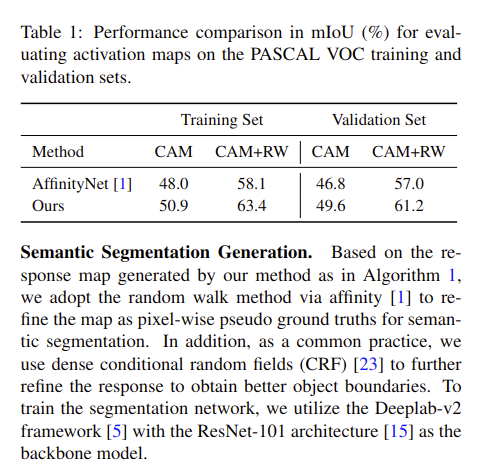

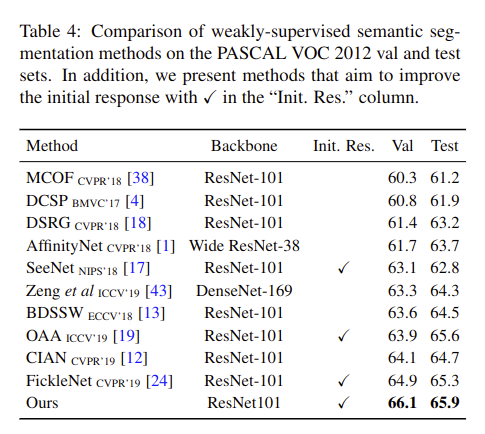
# 实验性能(3张表)
- Tab.1 是和 AffinityNet 的比较
- Tab.3 是和其他方法在每个类别上的性能比较
- Tab.4 是和 SOTA 方法的性能比较
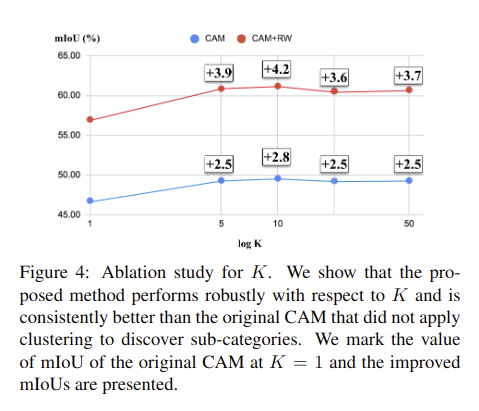

# 消融实验(2个表)
上面两张表是对子类数量 以及迭代次数的消融实验,最终K 取值为 10,round取值为3
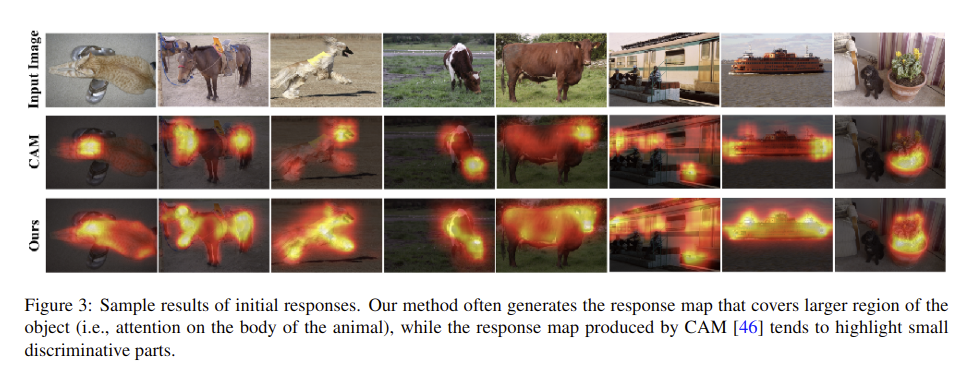
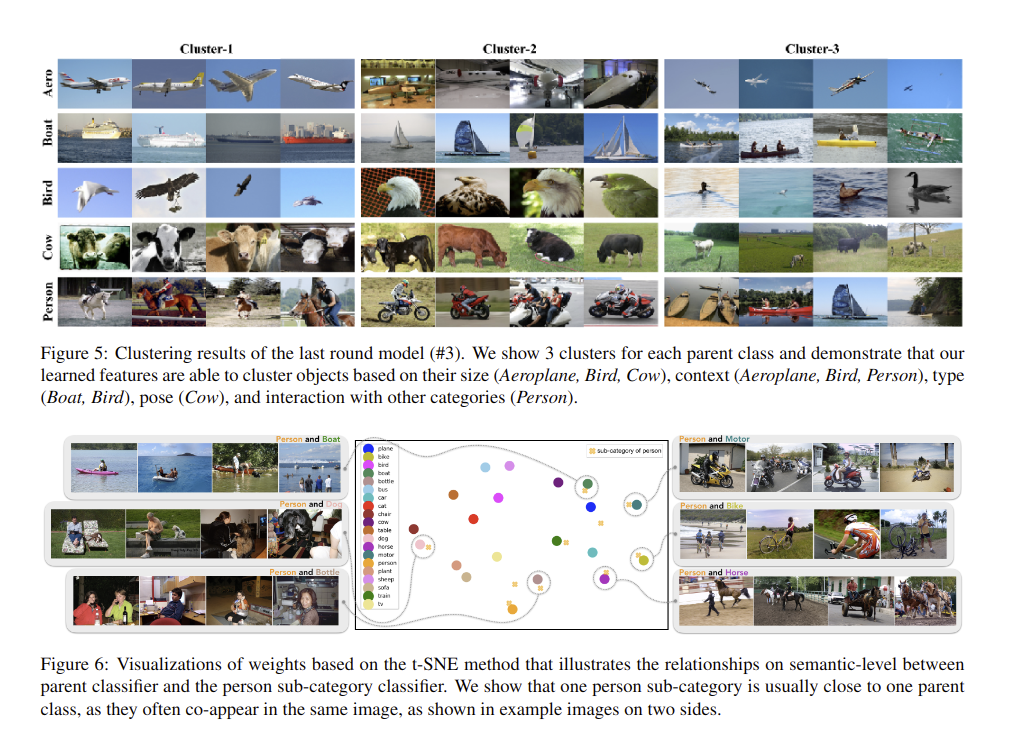

# 可视化结果(4张图)
- Fig.3 展示了CAM的可视化结果
- Fig.5 展示了聚类的结果
- Fig.6 展示了特征空间上子类和父类的 t-SNE 结果,表明人这个子类别通常和其他的父类靠的很近,因为他们在同一张图里共同出现的概率很高
- Fig.7 是量化结果
# 论文的方法
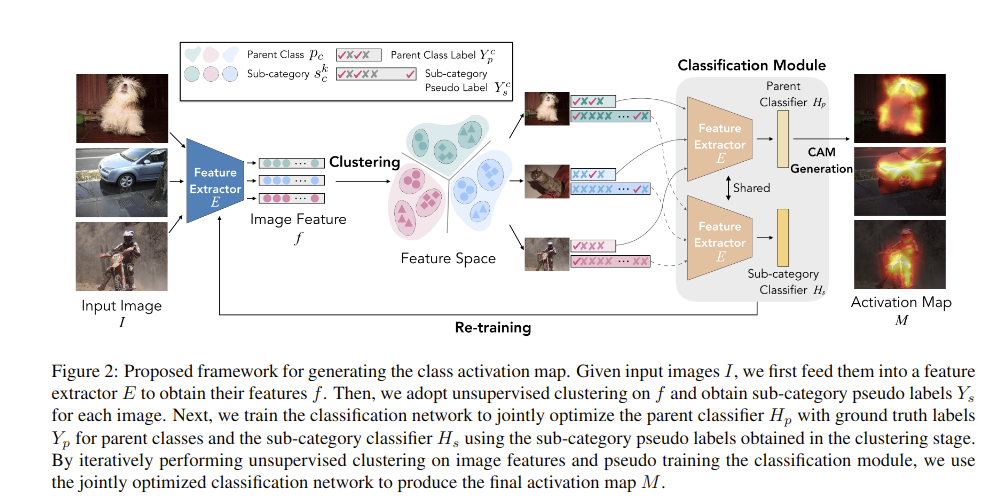
# 论文的背景
# 总结
# 论文的贡献
将原始类别称为父类,在特征空间上对同父类样本的特征聚类后生成 个子类,聚类的结果作为子类的groundtruth,用于计算子类的loss。相当于做了一个额外的任务约束,来激励模型学到更多的语义信息。
# 论文的不足
# 论文如何讲故事
# 参考资料
https://arxiv.org/abs/2008.01183
https://github.com/Juliachang/SC-CAM
Refinement: We adopt the random walk method via affinity to refine the map as pixel-wise pseudo ground truths for semantic segmentation. Please refer to the repo of AffinityNet (opens new window) [1].
Segmentation network: We utilize the Deeplab-v2 framework [2] with the ResNet-101 architecture [3] as the backbone model to train the segmentation network. Please refer to the repo (opens new window).
上次更新: 2021/11/03, 23:35:28
- 02
- README 美化05-20
- 03
- 常见 Tricks 代码片段05-12
